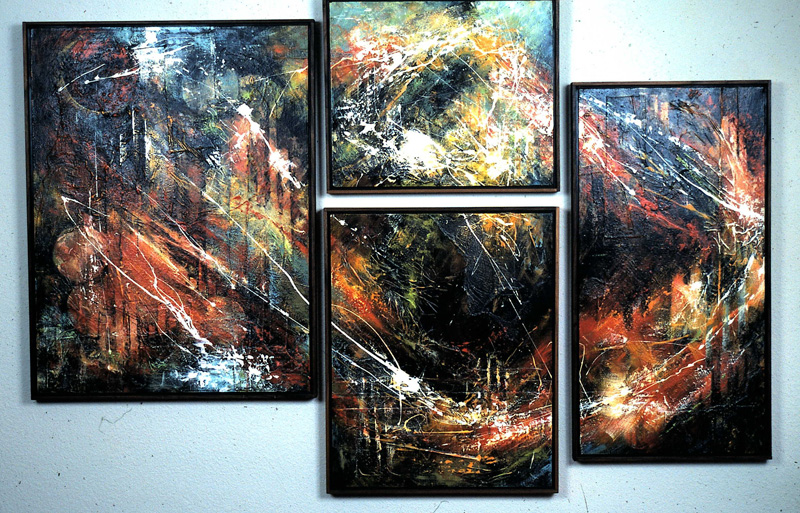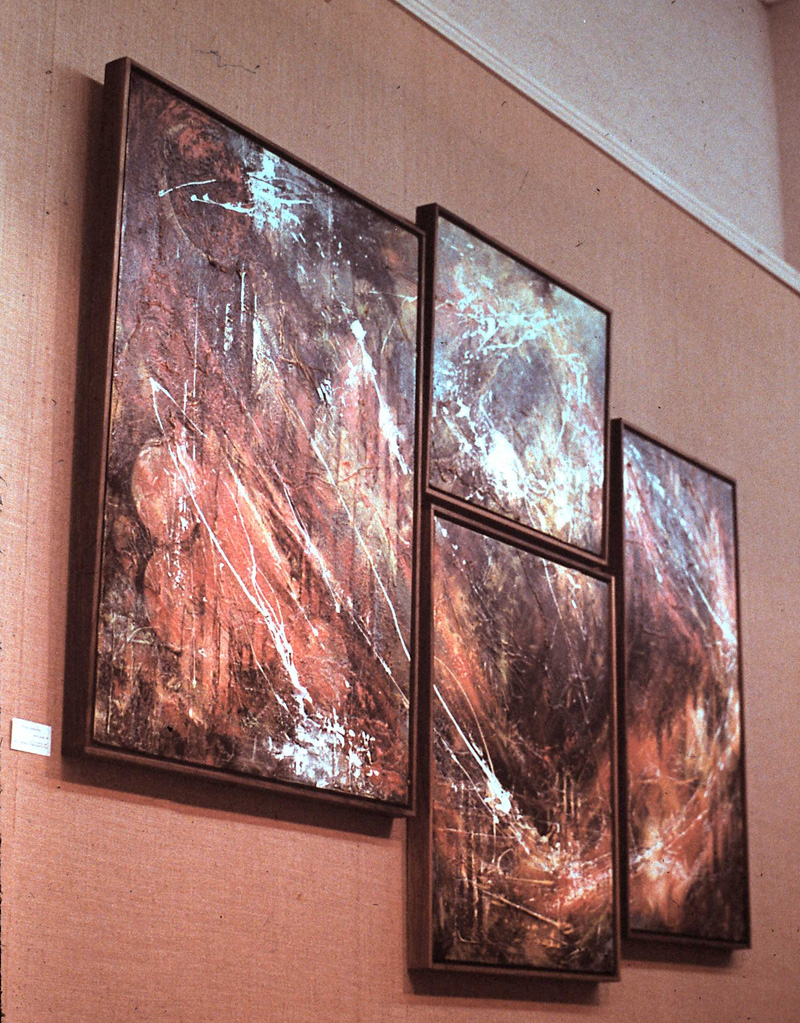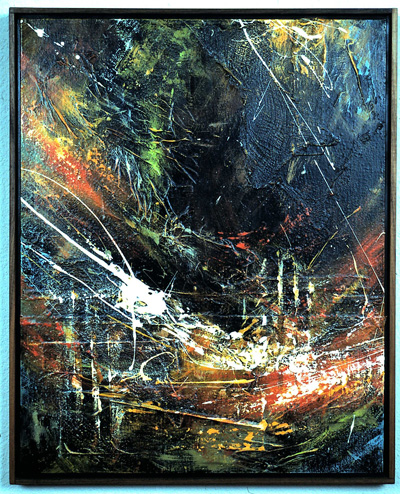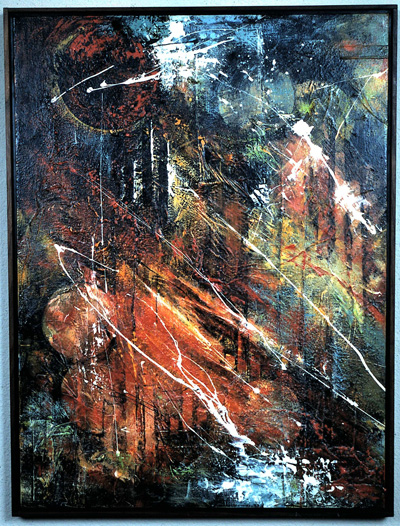Beethoven's Ninth
Beethoven's Ninth, 1977, 54"x81", acrylic/collage, Bank of America Collection
For almost a year, I felt that "Beethoven's Ninth" was going to be my "Unfinished Symphony!" The collector who bought Mahler's First had invited me to her home after the work was installed to see how it looked. In our conversation she said, "My favorite is 'Beethoven's Ninth'--if you ever paint that, I want it--it'll go right there." "Right there" was a large wall done in blue silk wallpaper. Although this was not a commission, her words did give me the incentive to try to put into paint perhaps the most magnificent symphony of all time. Getting the size of each movement and the composition arranged, while difficult, proves easy compared to painting the work. I painted and struggled and wiped out time and time again. Even though I was saturated with Beethoven's music, my responses weren't working, nothing seemed right and so I was in one of my black moods of despair. During this depressing period, I met my collector in a store. She told me that she and her family were going to Greece that summer, rent a large ship and cruise the Mediterranean, and how much the trip was going to cost. On my way home the thought came blasting through--she won't be able to afford "Beethoven's Ninth" for a long while! Instead of disappointment I would have expected, a huge wave of relief engulfed me! Strange! Then suddenly I realized that her words so long ago had penetrated so deeply into my Subconscious that, without even being aware of it, I was trying to make Beethoven conform to blue silk walls! With a tremendous sense of freedom and exhileration, I hurried home to my easel. In a burst of excitement, I put the symphony on and allowed Beethoven's colors to come booming through--warm oranges, reds, golds, earth tones. My former feelings of absolute frustration turned to home! But this was far from the end of the struggle. In expressing Schuler's "Ode to Joy" in music, Beethoven created a very different movement for a symphony--his wondrous choral movement. Somehow my fourth must also reflect not only the similarity to the other three but also the vast difference. I tried one thing after another--perhaps a bit of "reality" within the abstract--the Goddesses--the Elsian Fields--or what?! Nothing seemed to work. My mood was once again dismal, with "unfinished symphony" thought abounding. Then one morning, as I was again playing the Nineth searching for the answer, one important difference suddenly became apparent. The base continuum in the first three movements was a rising triad but, in the fourth, two notes ascended and the third descended. Here was "something" to latch onto and I structured such passages into the work. That helped a lot, but not enough. However, the introduction of abstract structuring must somehow have triggered some deep inner response of "rightness," for soon after that came the bolt of lightning--the CIRCLE! Why hadn't I thought of that long ago? "The Ode" speaks of completeness--a circle is the only pure geometric form completed with a single line and symbolizes completeness. Joy--surely a sense of completeness--could this be expressed by the circle. The "Ode" speaks also of the daughters of Elysian--the circle is a feminine symbol. It also talks of searching for God in the skies above. The skies above contain myriad "circles" of stars and planets. And so, with the incorporation of the circle into the fourth movement, my "unfinished" at long last became "Beethoven's Ninth," and the circle fully emerged as an important symbol. Contemplating the end result of this struggle, I realized that the addition of the two geometric elements into the flowing, lyrical patterning resulted in another significant step in my ability to make meaningful visual statements. By pitting very structured elements against very emotional ones, I had arrived at a symbolic expression of the meaning of being Human and of the dichotomy of the Conscious/Subconscious Mind. My patterns of flowing movement, developed intuitively under the influence of the music, reflect my conviction that it is the Subconscious that keeps us in tune with the Life Force of the Universe. Geometric line and shape are brought together into the statement to harness the organic movement into a composition expressive of Beethoven's music. They are also symbols of thought, and thus express my awareness that the big difference between Man and all other creatures on earth is the Conscious Mind. Only Man can make the considered mark or take the considered action. And only Man tries to structure his Universe! Although I agree with Jung that symbols are not true symbols unless they emerge unawares, I find that once they HAVE surfaced naturally, they become an important part of the artist's vocabulary. The sense of rightness of the symbol is then conducive to the discovery of additional meanings in that symbol, and/or the emergence of other sumbols of equal or even deeper significance.
|
| suites home | next suite | gallery |



